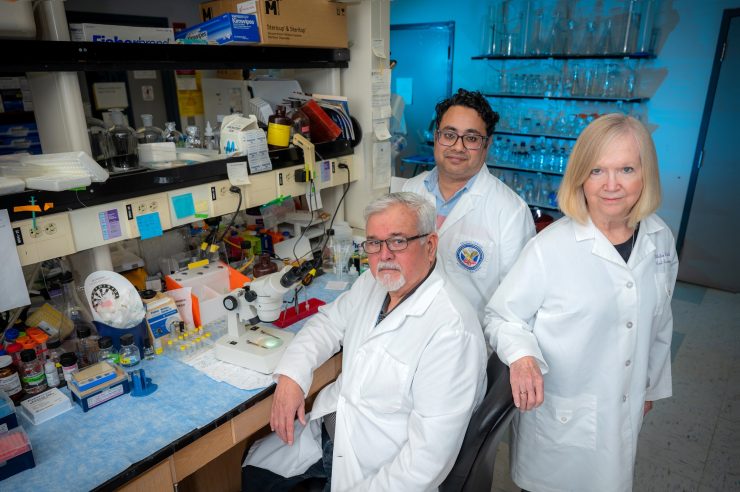In the spiraling cycle that can lead to vision loss in premature newborns, Medical College of Georgia scientists have found a new target and drug that together appear to stop the destruction in its tracks.
In babies, the development of the blood vessels of the retina should be complete by birth. But with preterm birth, the still-immature retina can develop a potentially blinding eye disorder known as retinopathy of prematurity.
When premature babies transition from inside the womb, where oxygen levels are relatively low, to significantly higher oxygen levels in the incubator, this creates a sensation that their still-developing retina is getting too much oxygen. That sensation inhibits normal blood vessel development, but the retinal neurons keep growing, which leads instead to relative hypoxia, or too little oxygen to the retina.

In the eyes of premature babies as well as people with diabetes, a cascade can follow that should help by growing more blood vessels to make up the oxygen deficit. But the well-intended response can prove problematic instead, resulting in what is called pathological retinal neovascularization.
Now MCG scientists have shown in their animal model of retinopathy of prematurity that the small molecule K604, which is being explored in cancer and Alzheimer’s, can block the development of leaky, obstructive blood vessels in the retina, tamp down inflammation and enable more normal blood vessel growth, ultimately enabling better vision for the babies, they report in the Journal of Neuroinflammation.
K604 blocks ACAT1, or acyl-Coenzyme A: cholesterol acyl transferase 1, an enzyme that converts free cholesterol and long-chain fatty acids to cholesterol esters, basically smaller pieces of cholesterol that can be more easily eliminated by the liver to keep cholesterol levels from getting too high.
But in premature babies, the hypoxia their retina’s may experience can prompt the formation of dysfunctional blood vessels in the eye and may lead to an accumulation of lipids, fats, and these cholesterol esters, says Modesto A. Rojas, MD, a vascular biologist in the MCG Department of Pharmacology and Toxicology.
It was ACAT1’s role in enabling these toxic cholesterol esters to pile up in the retina that led the MCG scientists to explore what happens when they block it, says Rojas, a corresponding author on the new study.









